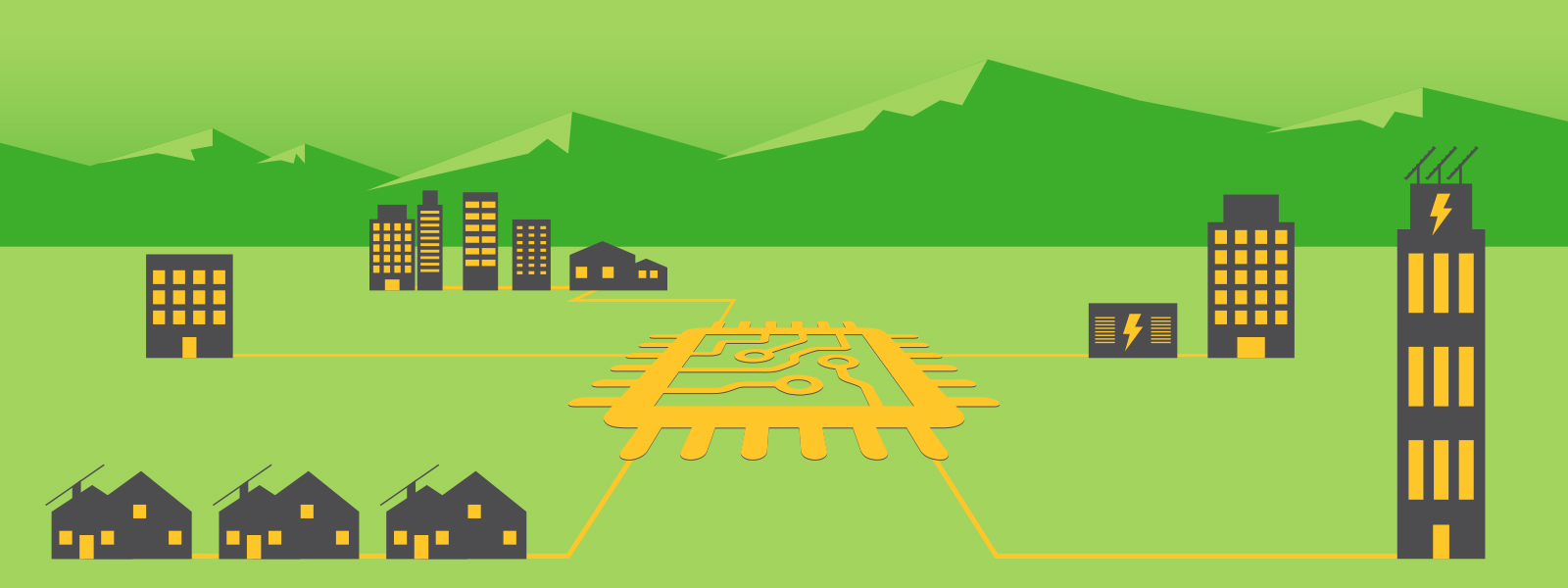PG&E has launched the Community Microgrid Enablement Program* to support vulnerable communities and serve critical facilities. This new program will help identify, design, and build permanent microgrids. Not only will this initiative help ease the demand on the regional grid, but it will also support community resources. As an added bonus, power outages may become less likely for both the microgrids and the regional grid. Let’s see what these new community microgrids really mean for the future of energy.
What is a microgrid?
A microgrid is a local energy grid that is self-sufficient and provides energy to a specific geographic area. Locations that these grids can include hospitals, college campuses, business centers, and certain neighborhoods. A local energy grid has the option to connect and disconnect from the main power grid, sometimes working independently in island mode. It has its own demand management, storage, and generation capabilities.
One of the biggest benefits of local energy grids is their ability to supply power to their geographic area even when the electrical grid has a power outage. Some microgrids are solar or solar hybrids. Microgrid power can come from residential solar, wind farms, solar farms, and batteries that are connected to the grid through the microgrid when it is in non-island mode. Solar energy supports microgrids and makes them even more sustainable. It is what allows them to island themselves from the main grid in case of a power outage.
PG&E is building community microgrids
The Community Microgrid Enablement Program by PG&E, one of the state’s biggest investor-owned utilities, will design custom microgrids to address specific needs and goals. The utility will prioritize areas with the greatest energy needs. Critical facilities, such as hospitals and vulnerable communities that face significant power outage events will be among the first to benefit from the program. The Redwood Coast Airport Renewable Energy Microgrid is the first project and is expected to have a working local energy grid by December 2021. This local energy grid will serve 18 customers including the Arcata-Eureka Airport and a US Coast Guard Air Station. And as additional good news, the project also includes electric vehicle (EV) charging points to help with energy demand.
Benefits of microgrids
Aside from supplying reliable energy to its customers, a microgrid has other economic and social benefits. A microgrid contributes to the stability of the central grid. It manages its own energy generation and can supply to the grid. Even when it doesn’t supply the grid, a microgrid reduces demand by generating its own electricity. It reduces grid congestion during peak times and enhances recovery. Most importantly, it keeps essential infrastructure powered. If critical services such as hospitals and fire departments are powered by these local energy grids, they are less likely to lose power, allowing them to continue to service their communities during disasters and other disruptive events..
Are microgrids the future?
Microgrid systems can bring many benefits to the communities they serve and to the general grid. This new initiative by PG&E has been praised as a sustainable solution to grid versatility*. Localizing grid energy could reduce energy blackouts and help during peak energy periods. A combination of solar and microgrids will make for a more sustainable and reliable power future for California. Freedom Forever is excited to see sustainable energy solutions in California and hopefully in other states.
Ready to go solar? Call us at 800-685-1850 or click below to get started
*These external links are being provided as a convenience and for informational purposes only; they do not constitute an endorsement or an approval by Freedom of any of the products, services or opinions of the corporation or organization or individual. Freedom bears no responsibility for the accuracy, legality or content of the external site or for that of subsequent links. Contact the external site for answers to questions regarding its content.
